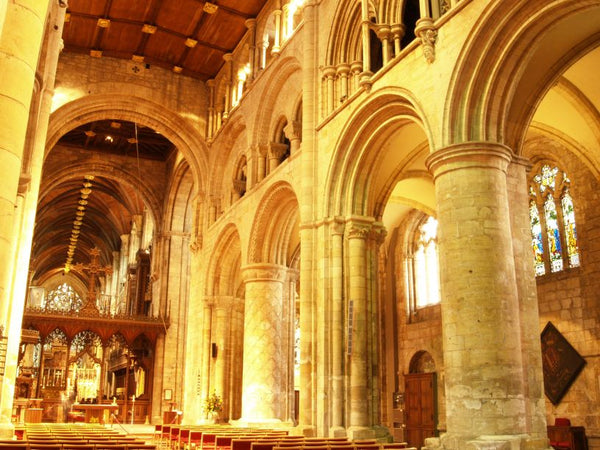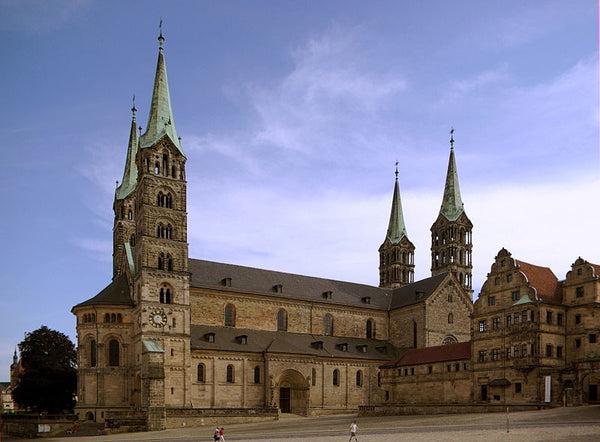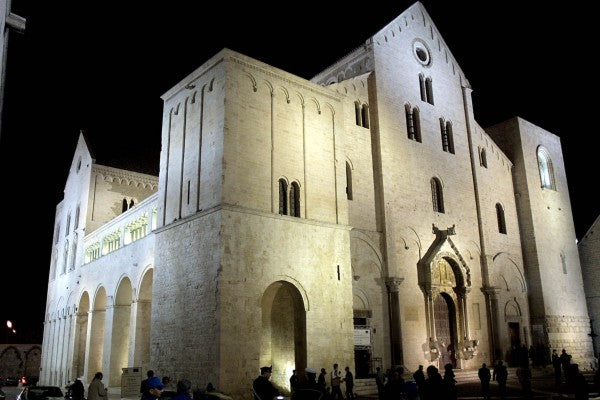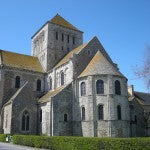As the late antiquity era was drawing to a close, so was the inevitable fall of the Western Roman Empire, whose capital was displaced from Rome to the Italian city of Ravenna. In 410 AD, the Visigoths sacked Rome and other barbarian tribes did so to the other cities in the west. It was during that time that most of Western Europe succumbed into what is commonly called the Dark Ages.
From the 6th to 10th century AD, massive architectural planning occurred as an attempt to restore the former glory of the Western Roman Empire. And thus, the Romanesque architectural movement was born.
Romanesque structures typically had the following features:
Round arches
 Image source: DocBrown.info
Image source: DocBrown.info
During this time, arches played a major role both in supporting churches and in accommodating the congregation.
Massive walls
Influenced by ancient Roman structures, colossal walls were used to enclose the interior of churches, while at the same time, allowing ventilation through large entrances.
Shallow buttresses
 Image source: Dispatch From Metz
Image source: Dispatch From Metz
Buttresses in Romanesque churches were large enough to support the sides, but did not rise any higher, as opposed to those in later architectural movements.
Stout columns
Another fragment of evidence of ancient Roman influence is the use of large columns for support. Traditional Roman patterns would be carved on the columns as well.
Murals
 Image source: HDC.org
Image source: HDC.org
The curving vaults within churches paved the way for the creation of murals which appeared to be highly influenced by Byzantine mosaic icons, albeit more vivid.
Large apses
 Image source: The Garfields
Image source: The Garfields
An apse is a part of a church shaped like half a circle, usually located at the far end where the main altar is.
Although a deviation from Byzantine domes, Romanesque apses are quite huge and the large facades are visible from outside the church.
Romanesque architecture was influenced by Early Christian and Italian Byzantine architecture. Both architectural styles were also highly influenced by ancient Roman architecture.
Stone was mainly used, although bricks were not rare. The discovery of marble opened many possibilities for architects, wherein they’d be able to use the material for decorative purposes.
Examples of Romanesque Churches
Bamberg Cathedral, Germany (1002 AD)
 Bamberg Cathedral
Bamberg Cathedral
Image source: Wikipedia
A late Romanesque church serving as the seat of the Archbishop of Bamberg, notable for its four imposing towers.
St. Michael’s Church, Germany (1031 AD)
 St. Michael's Church
St. Michael's Church
Image source: Wikipedia
Now a Lutheran church, St. Michael’s Church has been a UNESCO World Heritage site since 1985.
Basilica di San Nicola, Italy (1197 AD)
 Basilica di San Nicolas
Basilica di San Nicolas
Image source: Wikipedia
A basilica in Bari, southern Italy, serving as an important pilgrimage site for both Eastern Orthodox and Roman Catholic devotees.
During the High Middle Ages, architecture took a drastic turn once again. As the west began to rise from the rubble brought about by the Dark Ages, builders took inspiration from the architectural style of the Goths, leaving behind aspects of ancient Roman structures in favor of something distinctly Germanic.
And thus, the Gothic architectural movement rose and made a lasting mark in the world of architecture. That will be discussed in the next post.


